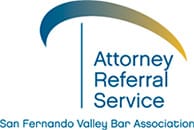
Flower wreaths, fringe, camping, music – Coachella is one of the biggest parties of the year. It’s also one of the wildest parties of the year, and that can mean legal trouble.
Drug Possession And Sale
Since Woodstock, music festivals have been synonymous with drug use. Of course, recreational drugs are just as illegal at music festivals as they are everywhere else. What happens if you get arrested for drug possession at Coachella?
The answer depends on the type of drug and how much of it is in your possession when you’re arrested.
Cocaine
In California, cocaine is classified as a Schedule II drug. California law recently changed to ease the penalties for possession of cocaine for personal use. It’s now a misdemeanor, with up to a year in county jail. If you have a large amount of cocaine, it may be construed as possession with intent to sell or distribute. That’s a more serious charge and can get you 2-4 years in prison – the same as if you were caught actually selling it.
Ketamine
Ketamine was originally developed for use as anesthesia. It has become popular for recreational use and is now classified under California law as a Schedule III controlled substance. Possession of ketamine is a misdemeanor and can be punished by up to 6 months in jail, although most people are put on probation instead. Sale of ketamine may be charged as a felony or a misdemeanor, with up to 3 years in prison.
Marijuana
In California, marijuana is classified as a Schedule I drug. As long as it’s less than 28.5 grams and you’re over the age of 18, you’ll just face a fine of up to $100. It’s considered an infraction, so it’s similar to getting a ticket. If you’re caught with more than 28.5 grams, that’s a misdemeanor with up to 6 months of jail time and a fine of up to $500. If you’re under the age of 18, possession of any amount of marijuana is a misdemeanor with up to 10 days of jail time and a fine of up to $250.
Possession of marijuana concentrates, such as hash and hash oil, is more serious in the eyes of the law. Possession of a marijuana concentrate can result in up to a year in jail and up to $500 in fines.
If you’re caught selling or distributing marijuana, you may be facing up to 4 years in jail and $100 in fines. However, a “gift” of less than 28.5 grams is a misdemeanor and comes with the same $100 fine for possession. Selling, delivering, or giving marijuana to a minor is a felony and can put you behind bars for up to 7 years.
MDMA
MDMA, commonly found in pill form and called “Ecstasy,” is one of the most popular drugs at music festivals. In California, it’s a Schedule I controlled substance. While possession is illegal and may come with a penalty of up to a year in prison, in practice most offenders with otherwise clean records receive probation. As with any other drug, the sale of MDMA is a more serious crime. If convicted of selling MDMA, you may spend up to 4 years in prison.
Alcohol-Related Offenses
Alcohol is legal if you’re 21, but drinking before your 21st birthday can get you in trouble with the law. If you’re caught with alcohol in a public place, that’s a violation of California’s “minor in possession of alcohol” laws and you may be charged with a misdemeanor. The penalty is typically community service, but it will still go on your record – and your driver’s license will be suspended for a year.
It’s also illegal to sell or otherwise furnish alcohol to someone under the age of 21. It’s typically charged as a misdemeanor and penalties may include fines and community service.
Even if you’re of age, you may run into trouble for consuming too much alcohol. In order to run afoul of California’s public intoxication laws, you must be so intoxicated that you are a danger to yourself or others or you must be somehow obstructing a public way – a road or sidewalk, for example. You may also face public intoxication charges if you fight with, attack, or threaten other people. In other words, being drunk alone isn’t enough to get you in trouble.
Other Offenses
While drug and alcohol offenses are usually the first that come to mind when we think of music festivals, there are other legal concerns. For example, fighting or brawling can result in assault charges and lewd behavior could put you on the wrong side of public indecency laws. Music festivals are also, unfortunately, often the scenes of sexual assault.
Arrested At Coachella?
Music festivals can be big fun, but they can also be big legal trouble. Any time you’re arrested, you should comply peacefully with any and all instructions by police officers. Request to speak to a lawyer as soon as possible and to let your friends or family know where you are and that you’re safe.
If you need legal services, our lawyer referral service can help you find an experienced local attorney to work on your case and defend you in court.
Image Credit and License
